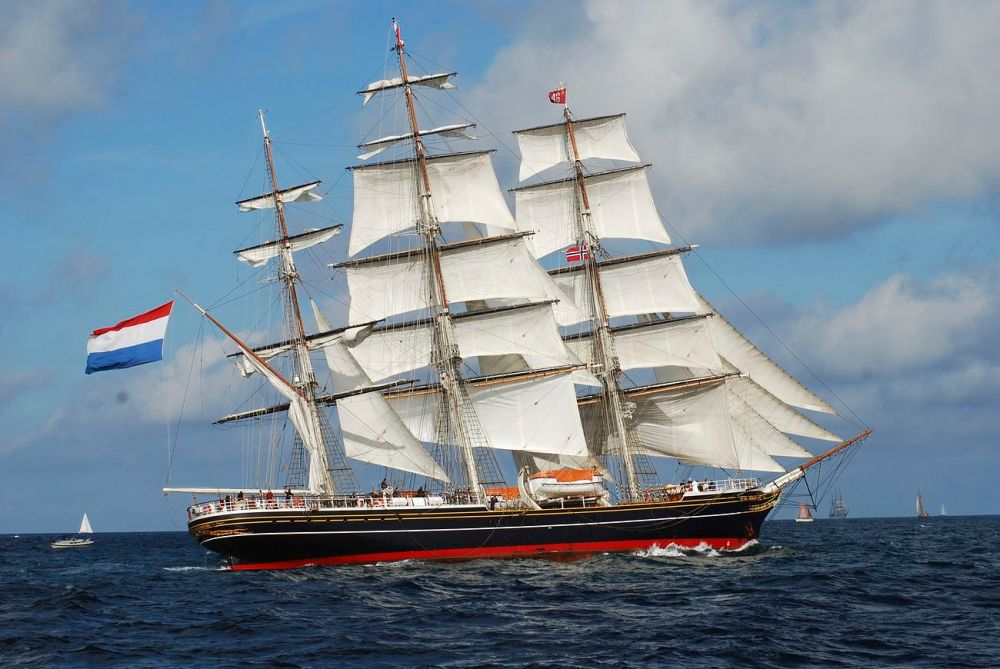The past year has seen all of us getting somewhat accustomed to seeing extreme weather conditions in the images on our phones. Various parts of the world were affected in different ways. Extreme heat waves struck parts of the globe that had not experienced such harsh temperatures earlier. Flash floods struck Dubai in November 2023, leading to flooding of roads and water-logging in the desert city. Just two months earlier in September, New York City had declared an emergency due to heavy downpour that had led to shutting down of subway lines, turned major road into lakes and sent children to the upper floors of flooding schools. Will the coming winter also bring extreme weather? This can only be answered by the weather forecasters.

How many times a day do you see the weather forecast on your phone? I think most of us do it frequently, especially now when the local weather has become unpredictable and takes one by surprise. Weather forecasting has gained even more prominence with the extreme climate happenings that are now striking the world with regularity.
Forecasting the weather has a long history. It is said that even in 650 BC, the Babylonians tried to understand the weather based on cloud patterns and astrology. In 350 BC, Aristotle was describing weather patterns in text; however he did not believe that wind is air in motion. He did however try to explain that west winds are cold because they blow from the sunset!
The scientific study of meteorology did not take off until measuring instruments became available. As science improved in measuring temperature, pressure, density and latent heat, and with the discovery of calculus, a better understanding of the atmosphere could begin. However, it was the nineteenth century that saw the rise of weather forecasting as a regular exercise.
It began with the invention of the electric telegraph in 1835, which allowed exchange of information quickly. Soon after, a Royal Navy officer, Francis Beaufort developed the wind force scale, which later became the Beaufort scale. He set up 15 stations on land that used the telegraph to create a gale warning service. It was in 1861, that the Times first began to publish daily weather forecasts.

Overtime, weather stations got established in many places, and technological growth ensured that the predictions began to get more accurate. Like many other breakthroughs due to the World Wars, weather forecasting too evolved rapidly. After the Second World War, Maniac, a computer designed at Princeton University could do 10000 calculations a second, and it was used among others to model and forecast the planet’s weather. Since then weather forecasting has come a long way. According to the World Meteorological Organization (WMO) a five day forecast today is about as accurate as a two day forecast a quarter of a century ago.

Weather forecasting is still carried out in basically the same way as it was by the earliest humans—namely, by making observations and predicting changes. Currently, it works by dividing the world into a grid of three dimensional boxes. Each box is then populated with data on weather – air pressure, wind speed etc. Then the computers get to work and on the basis of calculations churn out forecasts. Logically, the smaller the area of the grid the more localized and accurate is the forecast. However even the most powerful computers have their limitations. The atmosphere is called a ‘chaotic system’, where any small initial change can give very different outcomes. So the forecast can go wrong, with the most minor change in the simulations. As per the WMO, this manner of numerical forecasting will approach a theoretical limit by 2050.
Increasingly AI and machine learning have entered the field, making predictions more accurate. Countries track and record weather data, which means there is plenty of publicly available data out there to use in training AI models. When combined with human expertise, AI could help speed up a painstaking process. The AI models go through huge amounts of historical data of weather to forecast the weather and can therefore recurring patterns and forecast even before the underlying reasons and science is understood. So while current numerical models rely on physical processes that affect weather, going forward, AI would be able to generate forecasts tailored to needs of customers!
Weather forecasting hitherto has been primarily in the public sector. However, with the importance of knowing what the weather will be for a variety of uses from aviation, agriculture, to military strategy, sports events and logistics of supply chains, many private players have also entered the arena. Most of them are based in the richer countries, but there are now nearly 15 startups in India in this space. The market for accurate weather forecasts is expanding as end-use industries like transportation, logistics, and renewable energy require certainty in weather conditions to boost productivity and cut costs. As per reports, the weather forecasting services market is expected to to reach US$ 4.5 billion in 2032, with a 6.7% CAGR during the forecasted period of 2022–2032.
The WMO is encouraging meteorological services to move from what the weather will be that is forecasting the weather to also what the weather will do – that is impact based forecasting and warning. This becomes even more important in our current times when the weather has become a volatile companion. Simply put impact-based forecasting, is the translation of official descriptions of the hazard into clear information about the likely impact. So instead of just giving the likely speed of the wind, its likely impact on homes, crops and buildings should be spelt out in an understandable manner. Understandable and accurate impact forecasting, in these times of climate change, would hopefully help save lives and livelihoods.

As we move into 2024, let us hope that the weather becomes a more predictable companion of humanity, through improved tackling of the climate crisis and enhanced tools to understand the impact of extreme weather. And you and I, when we peer into our phones, see better times ahead
Published in the Lokmat and The South Asian Times https://thesouthasiantimes.info/sky-gazing-forecasting-the-weather/?swcfpc=1

